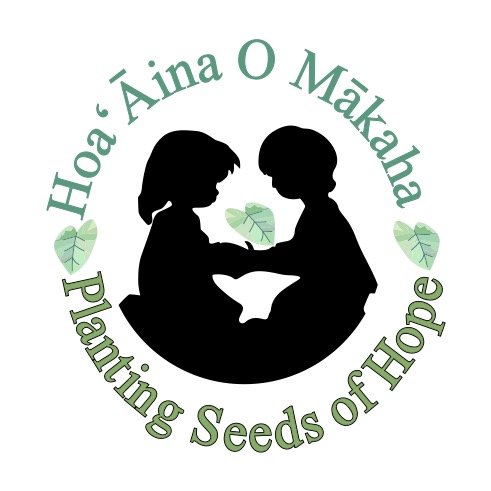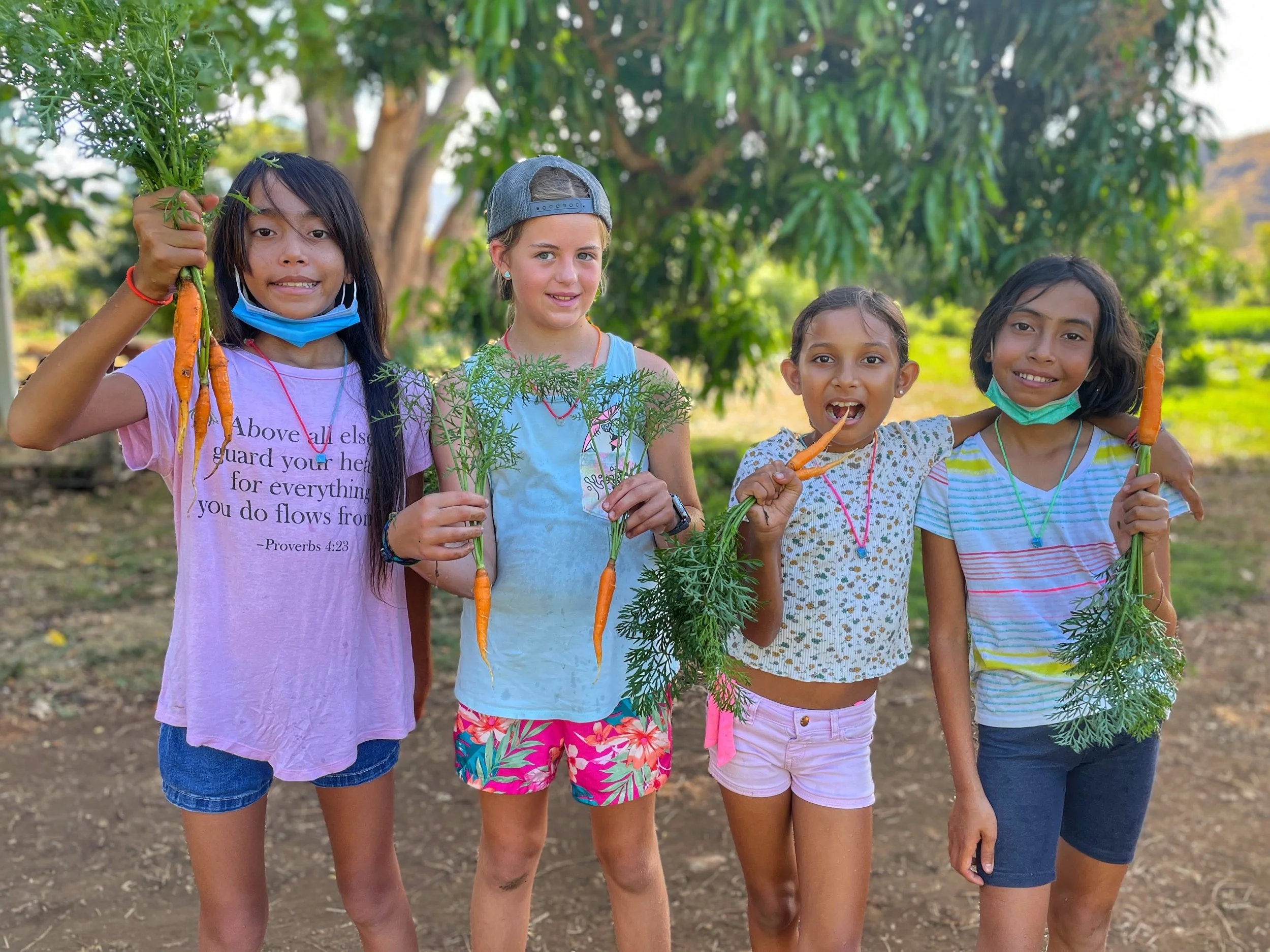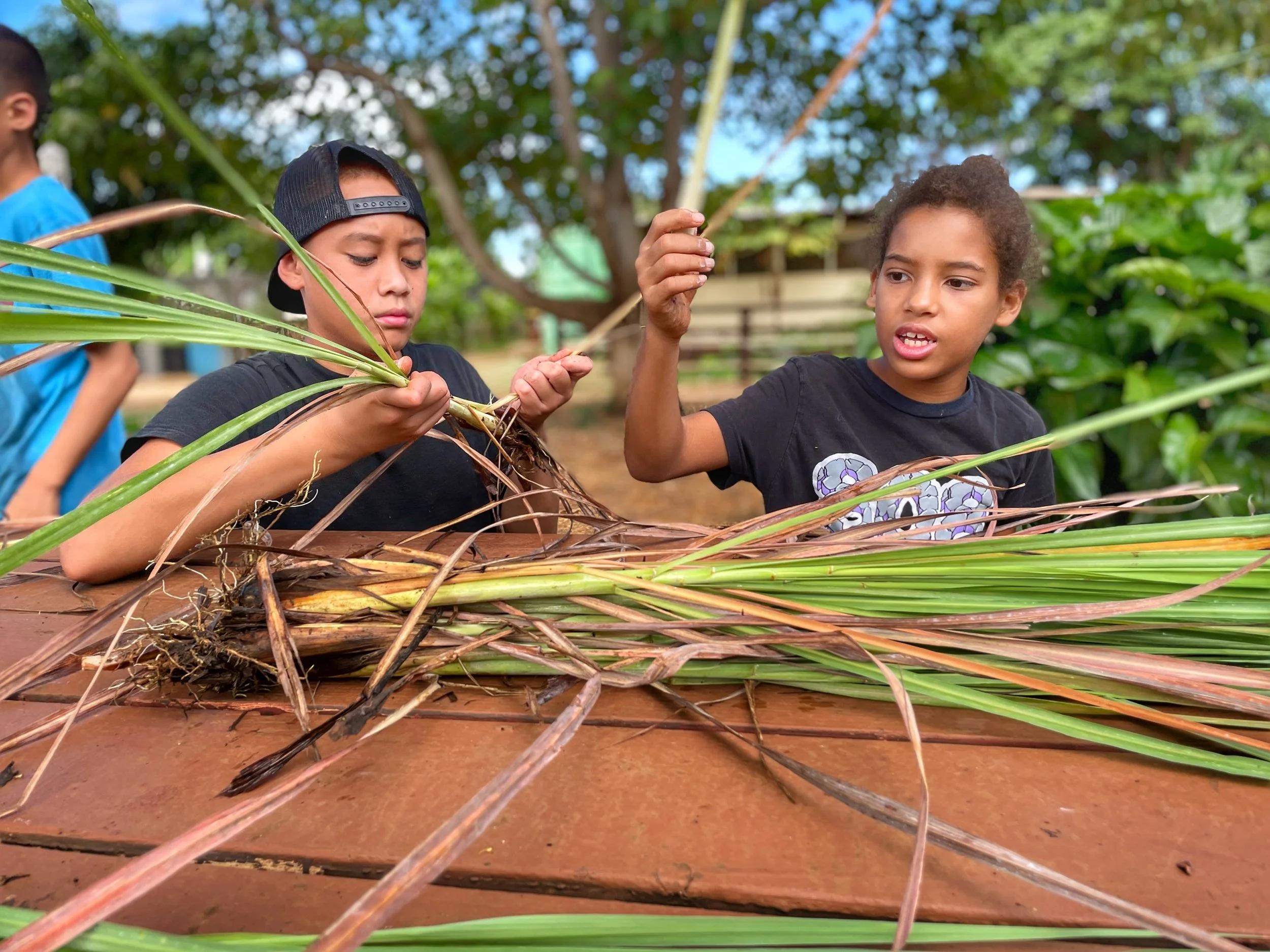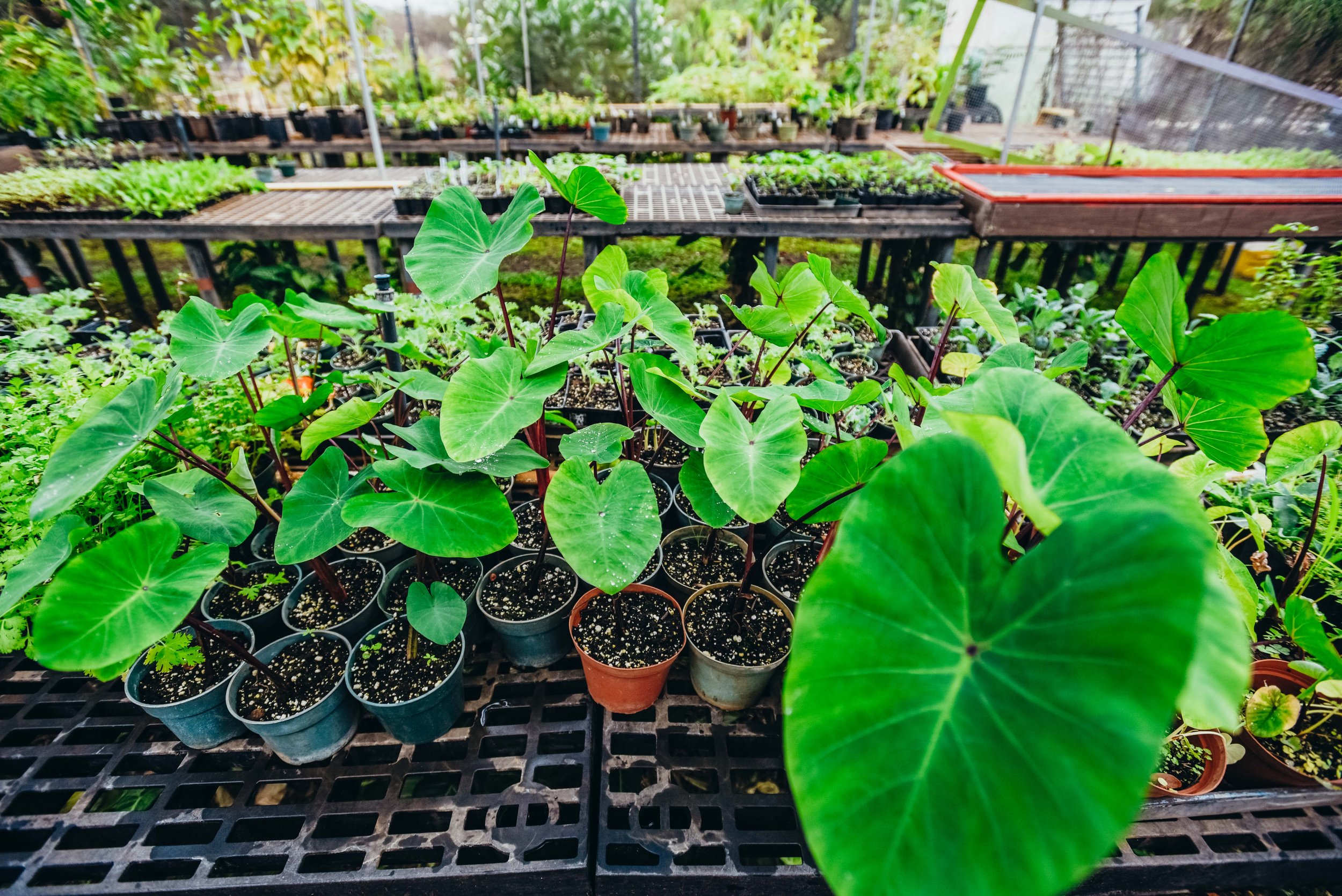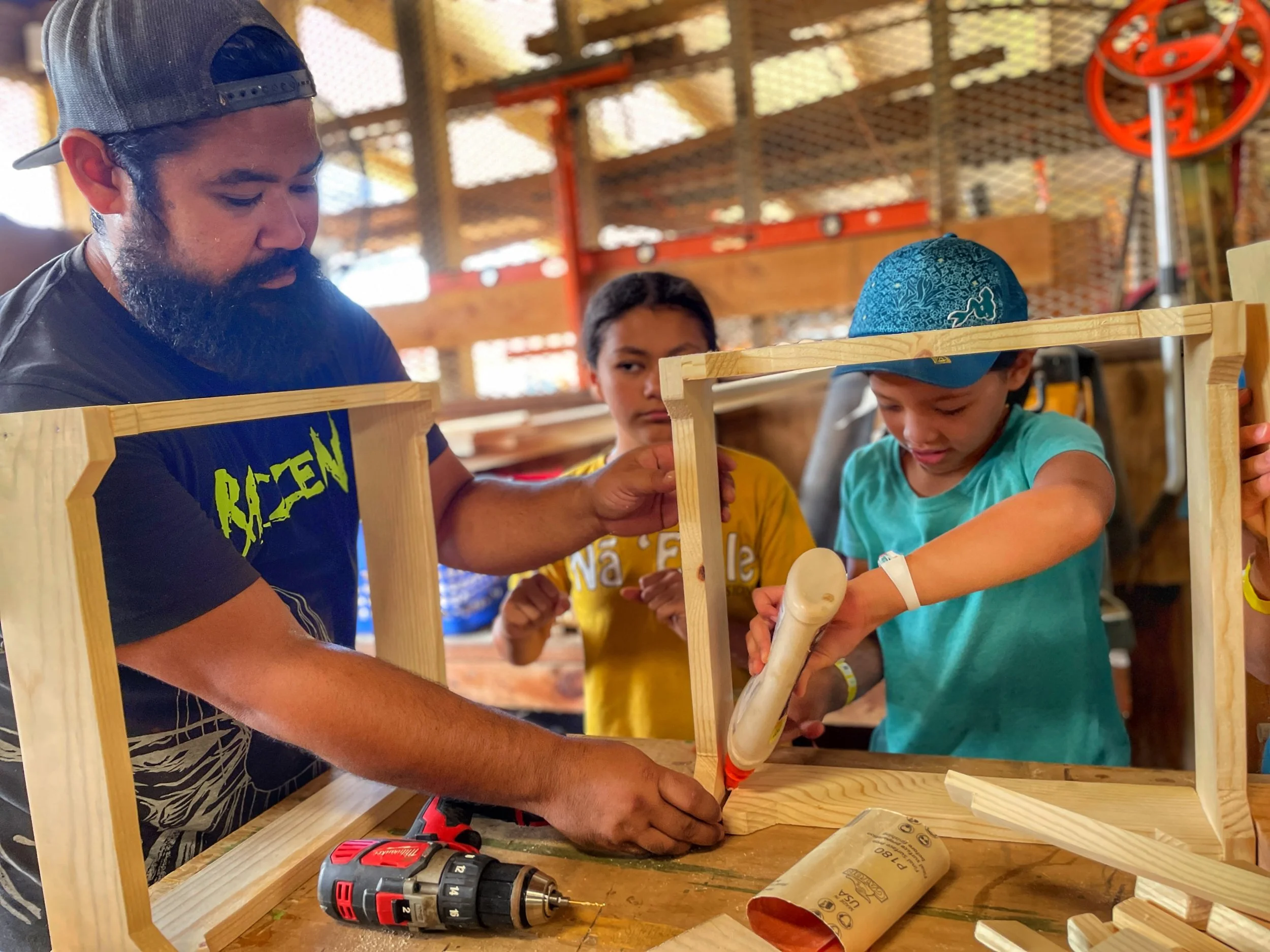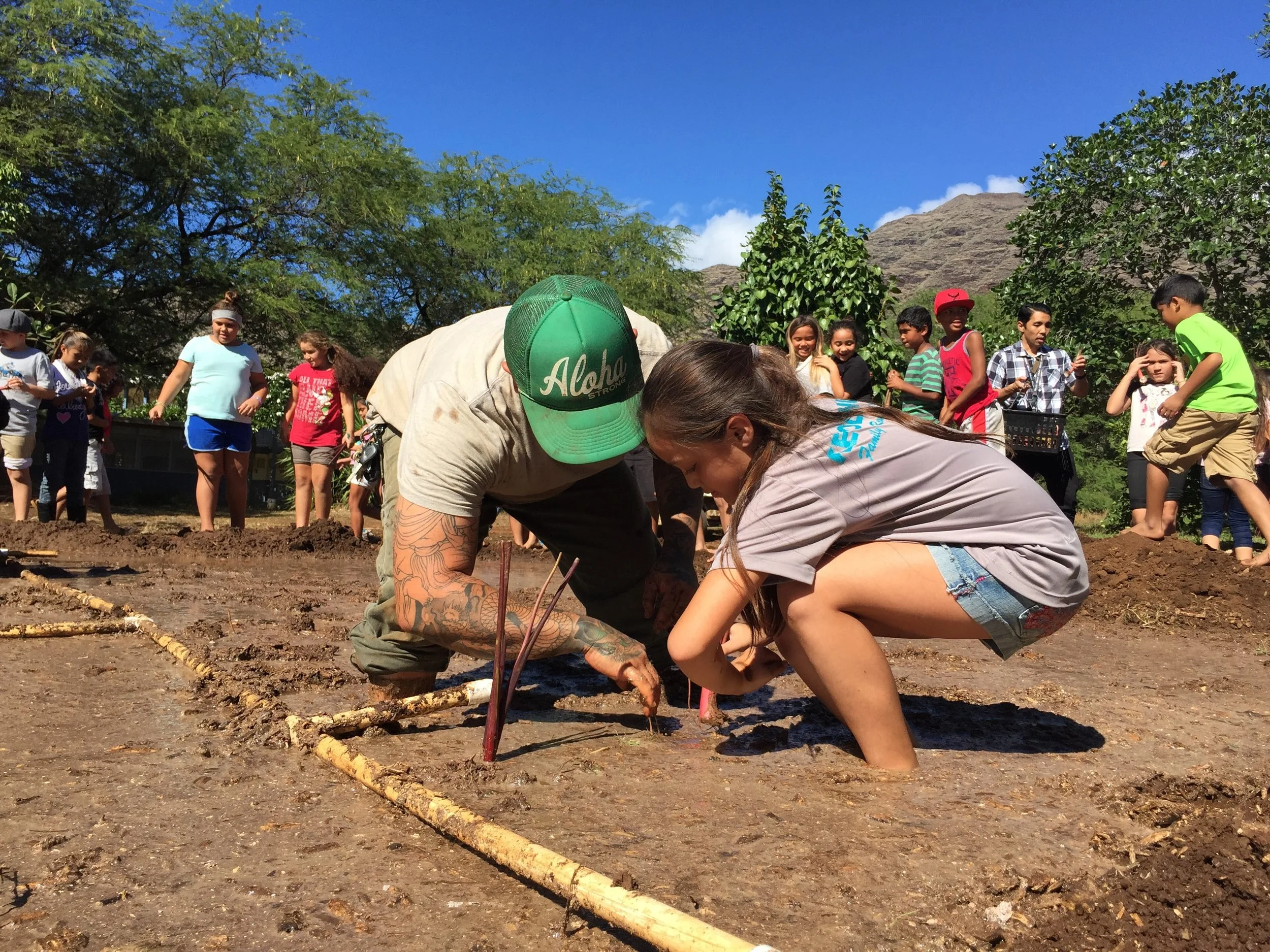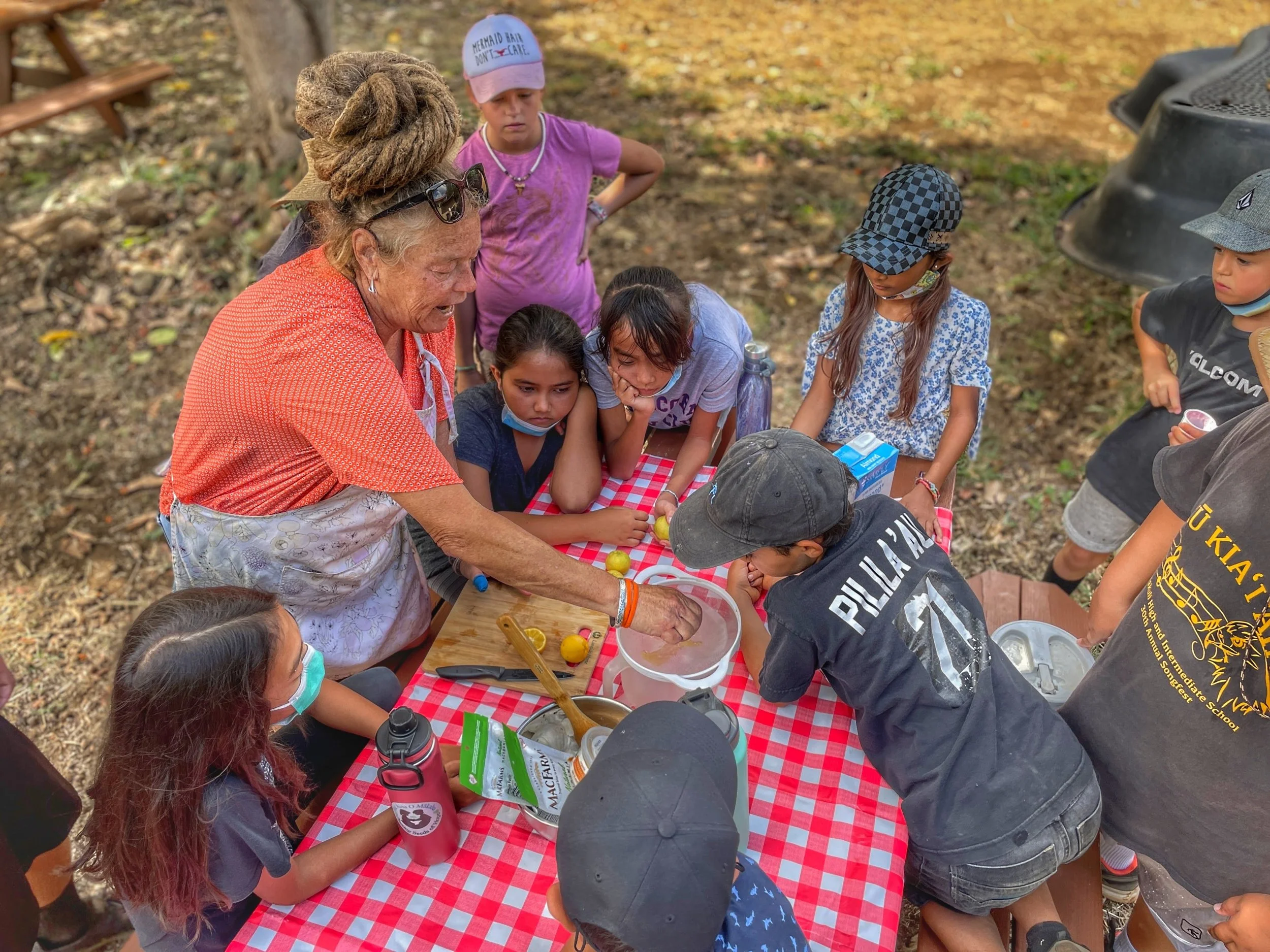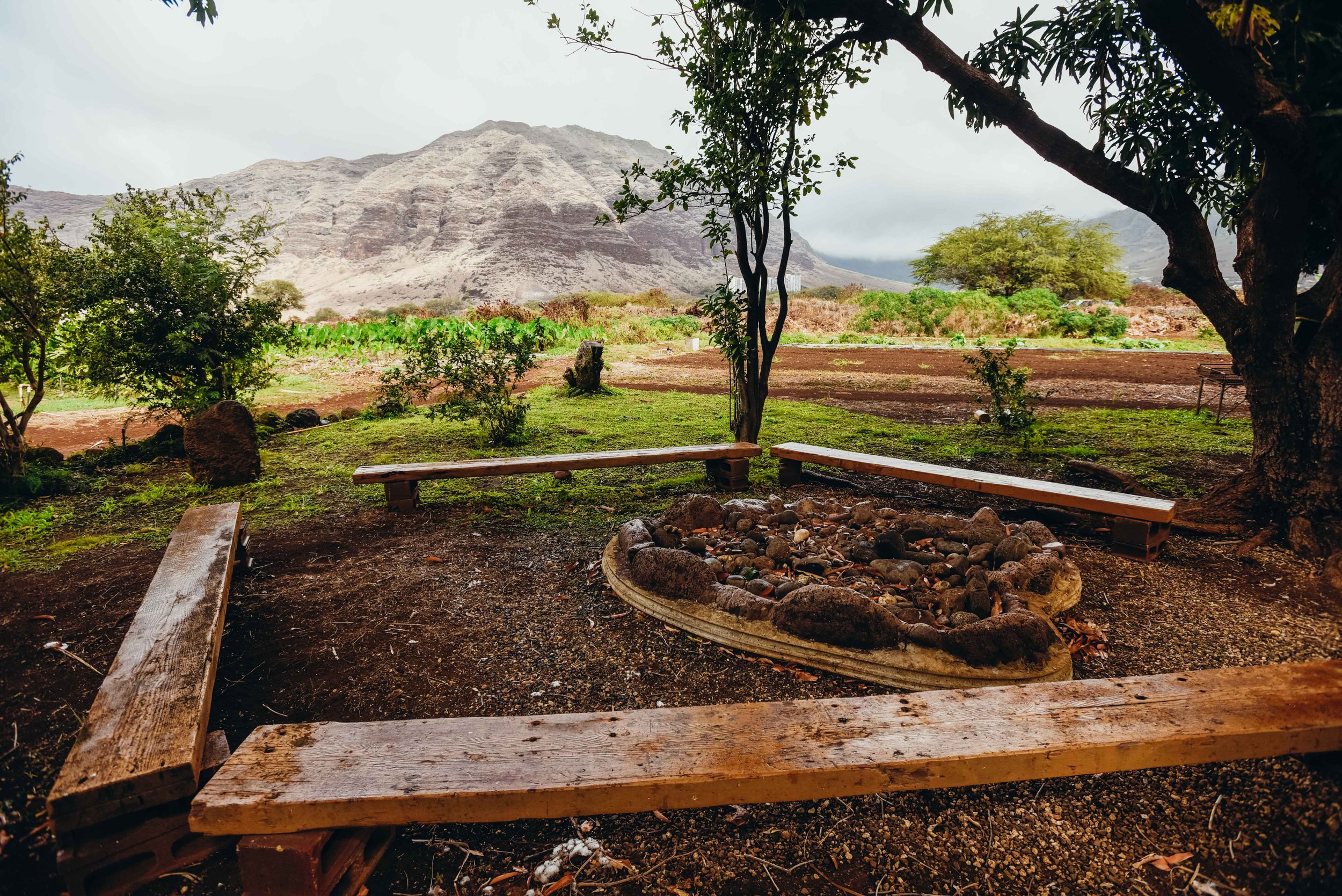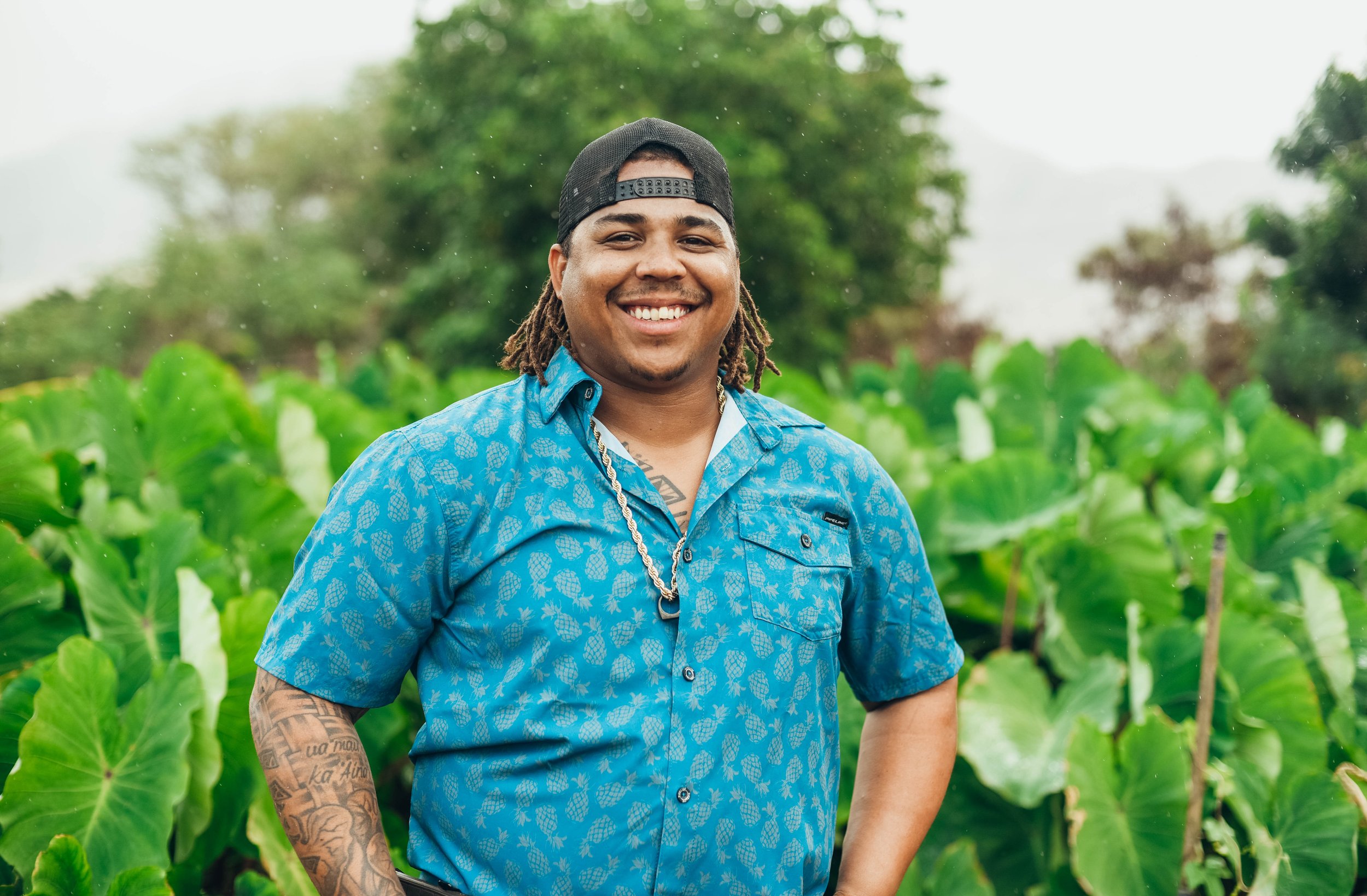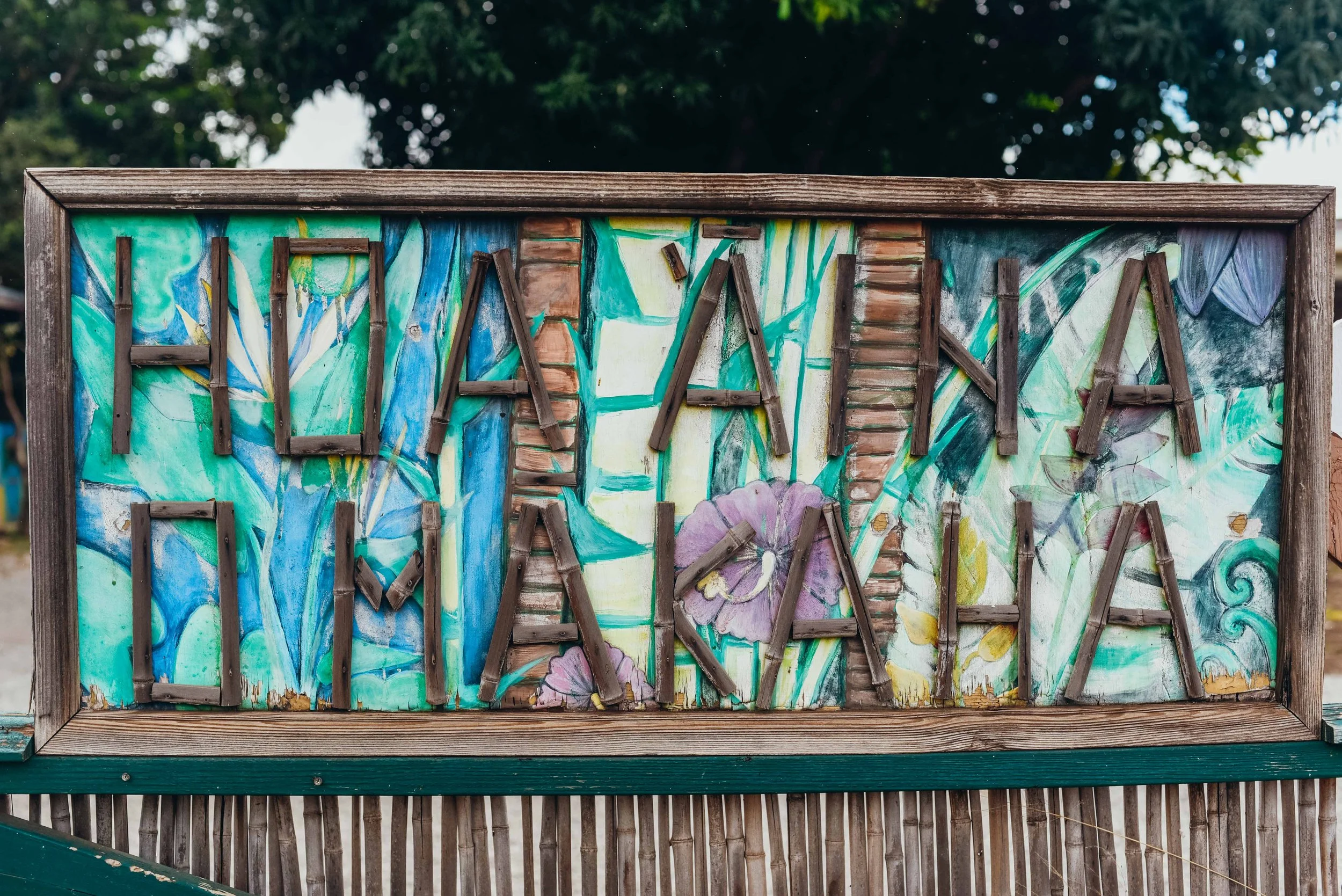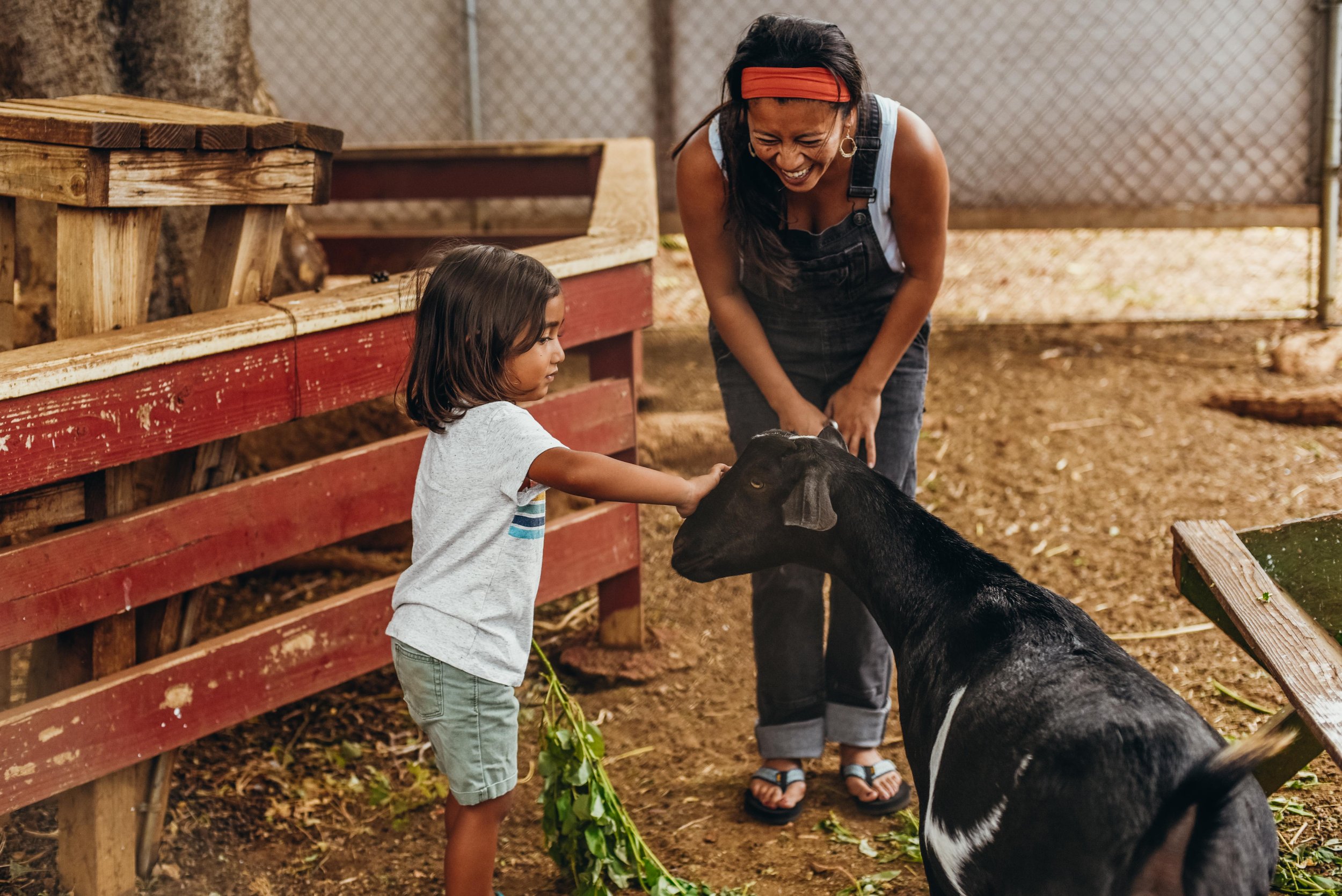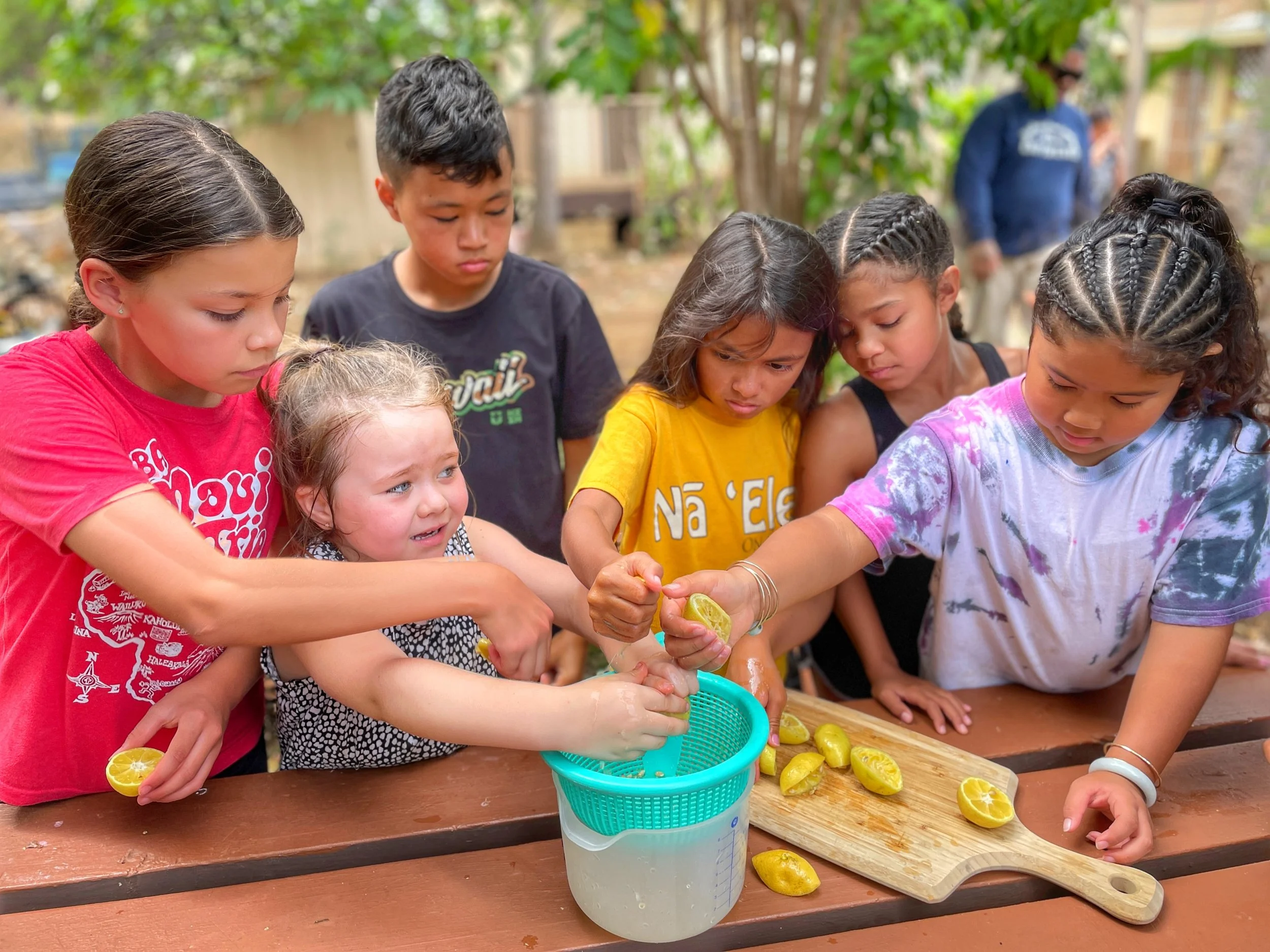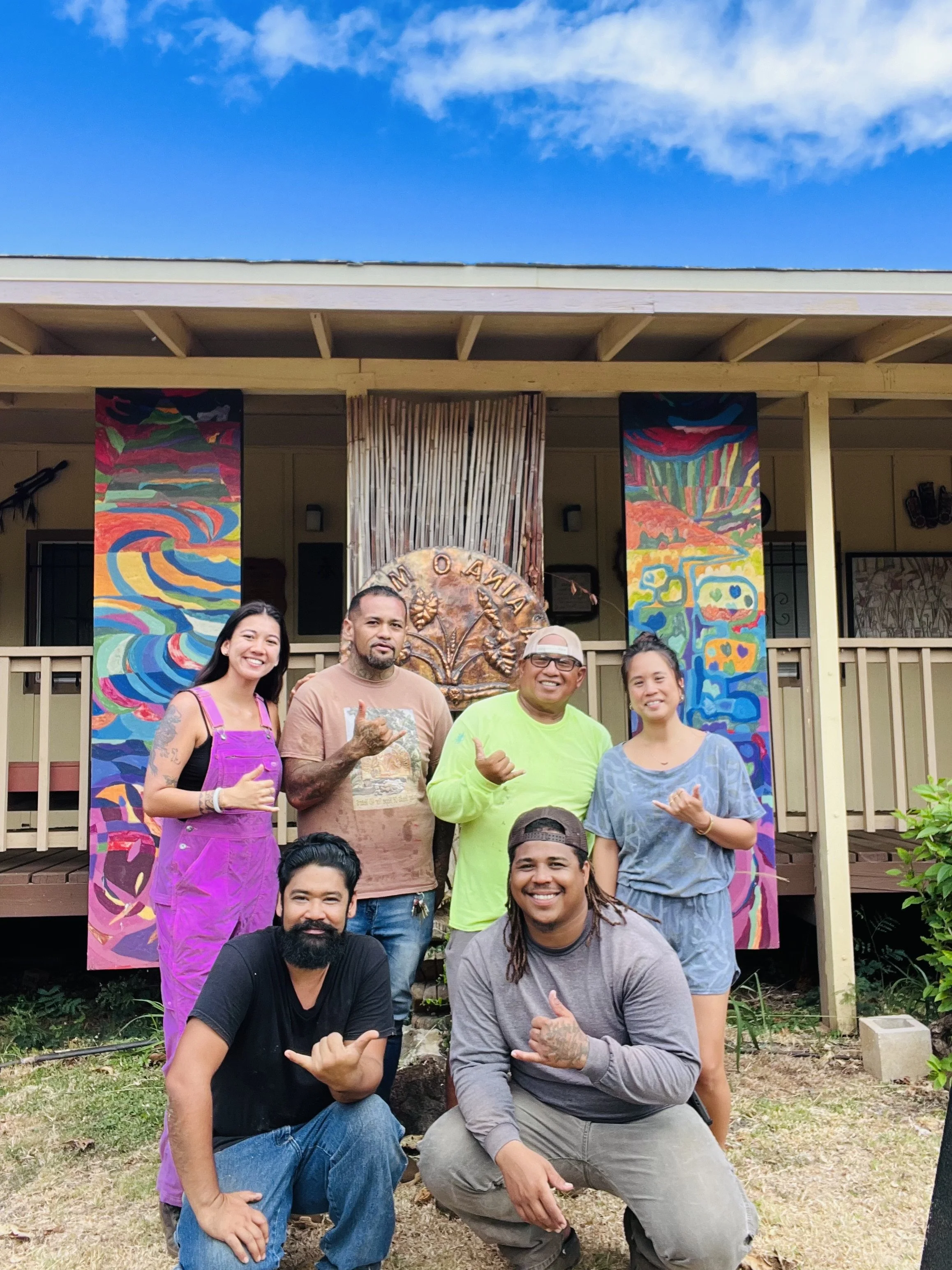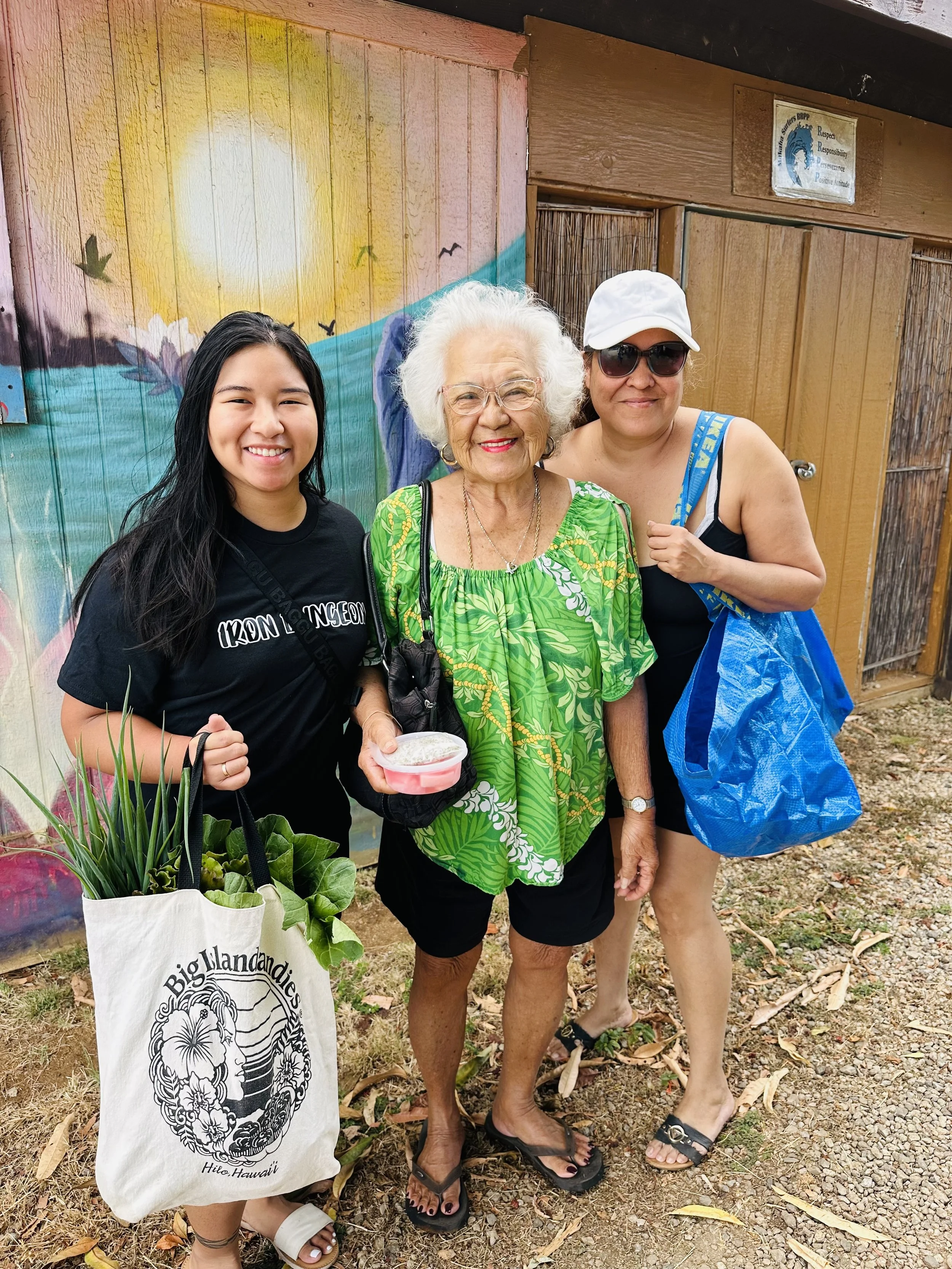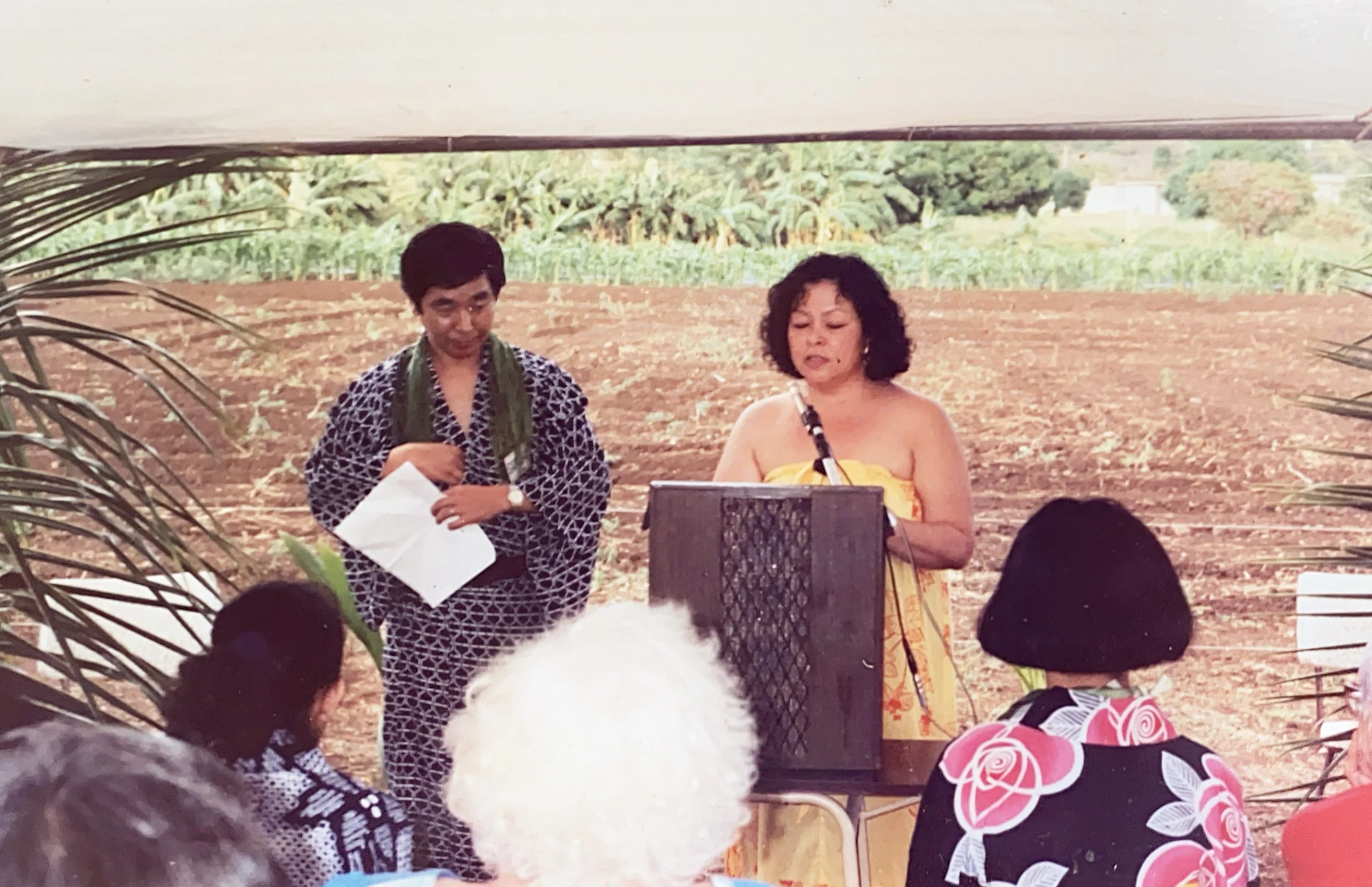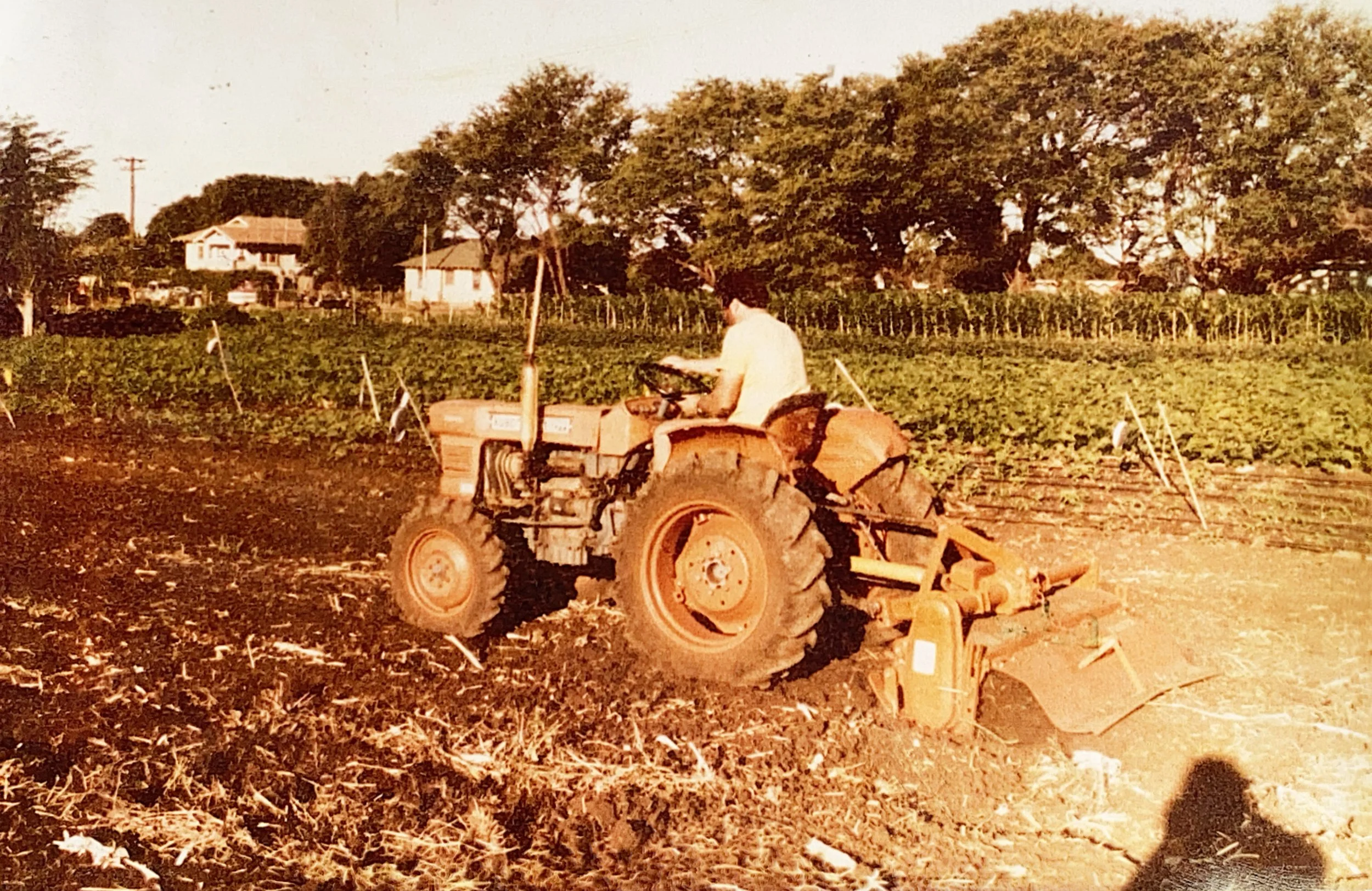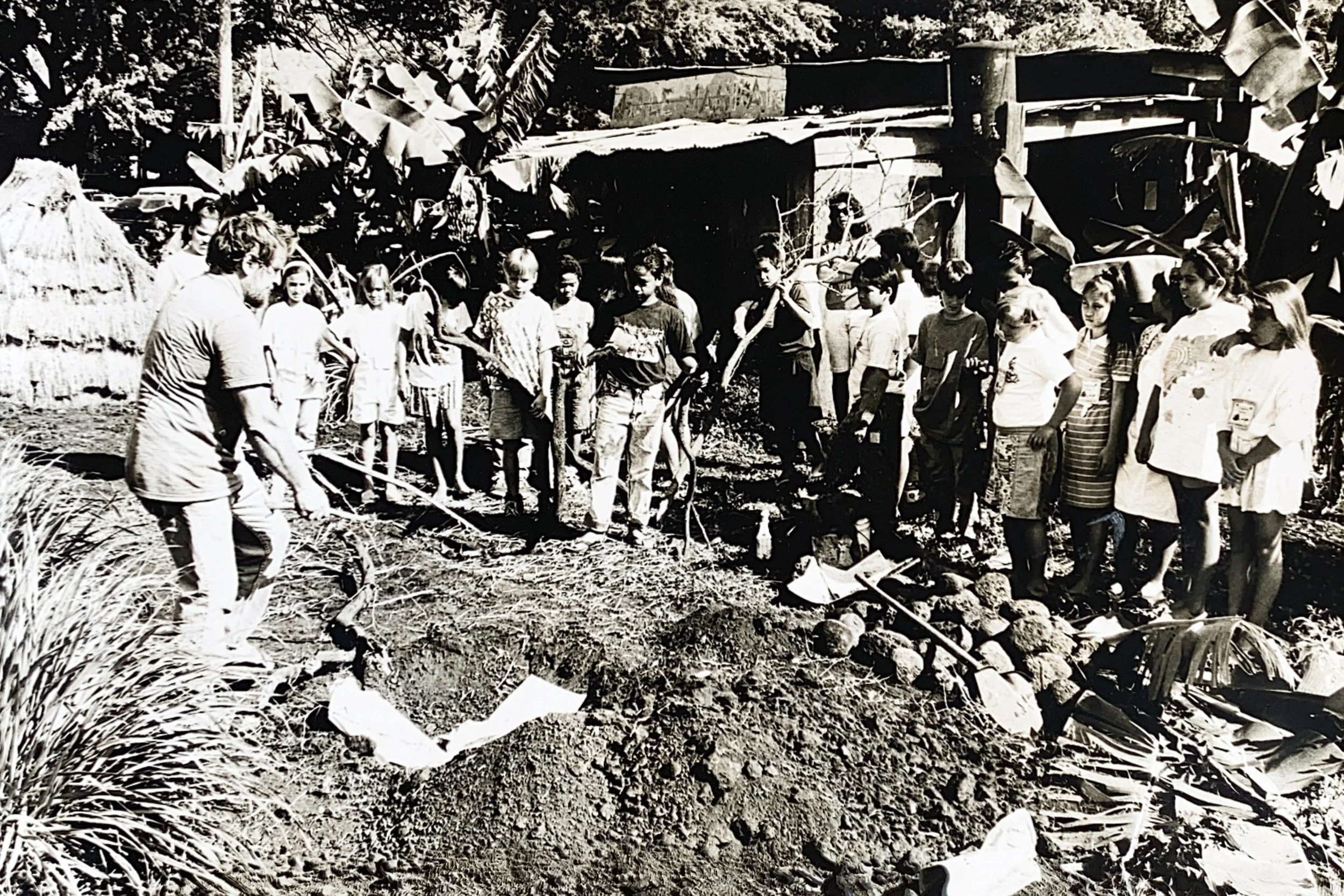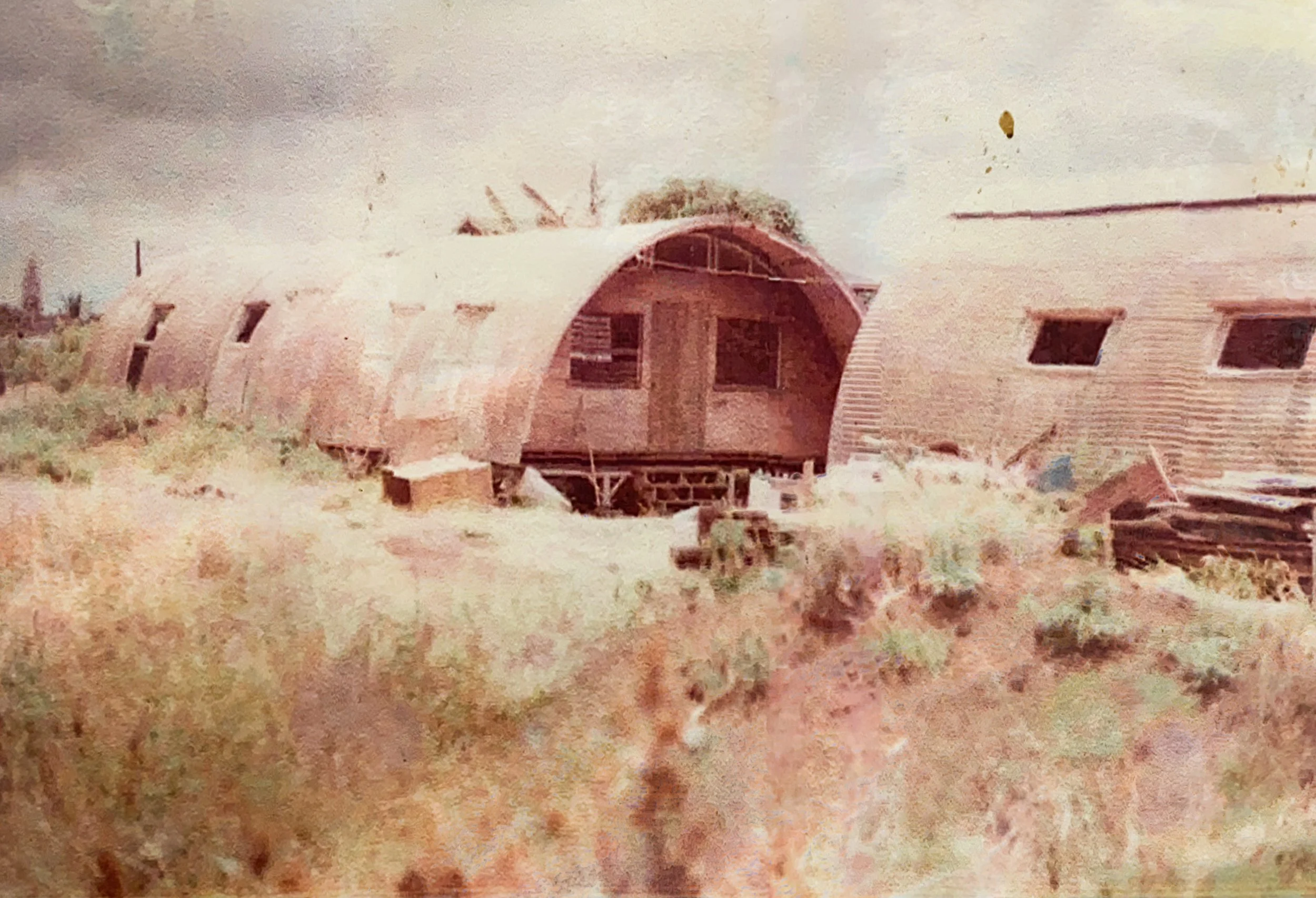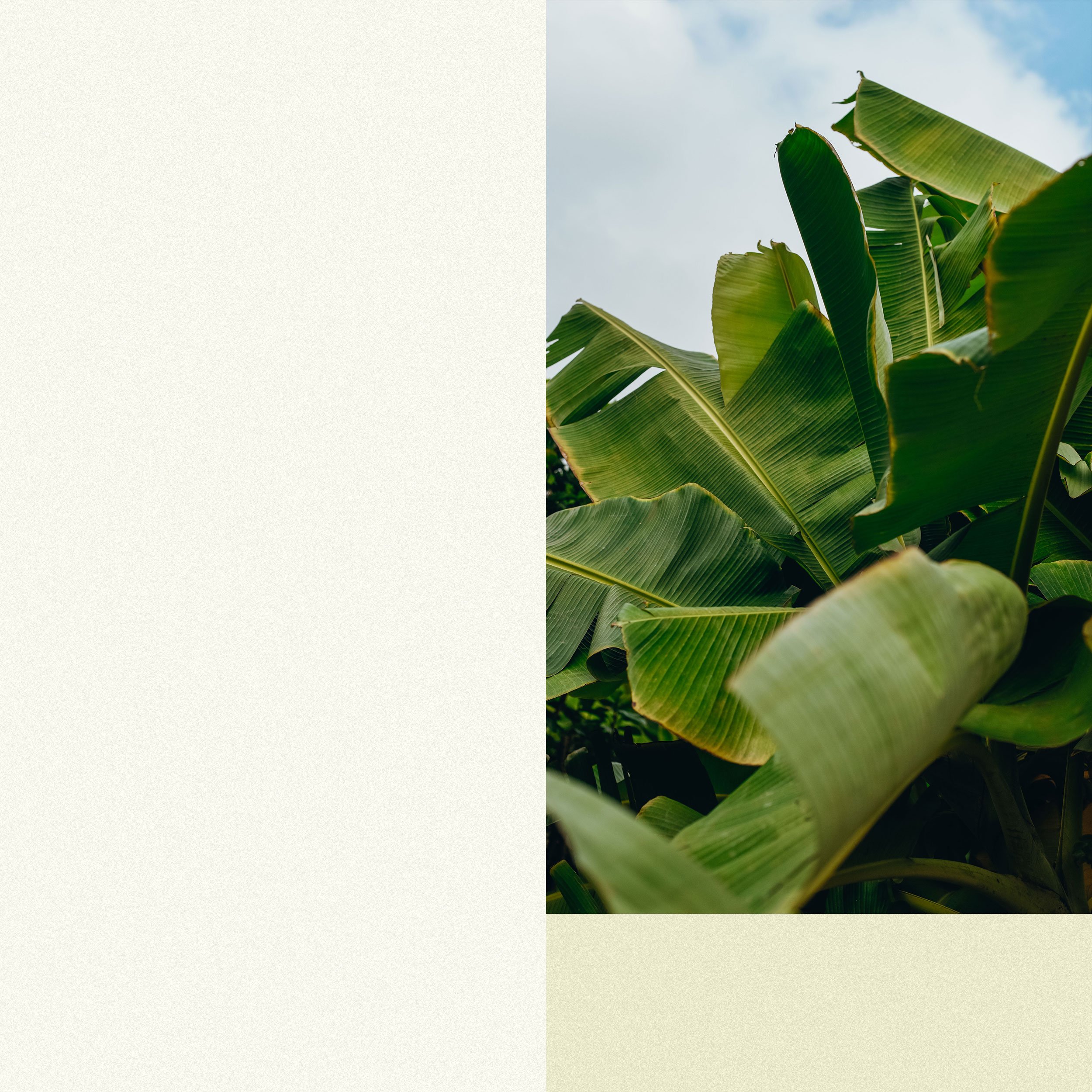
Mission
Creating peaceful communities in harmony with nature through the eyes, hands, and hearts of the children

Movement
Hoa ‘Āina O Mākaha (Land of Mākaha Shared in Friendship) is more than a destination farm or nonprofit organization. The embrace of a sanctuary is felt by whoever enters the gates and a sense of belonging usually follows.
Once a barren piece of land from the past and now a thriving educational resource center, HAOM has been a village commitment since the beginning. Our mission focuses on community self-reliance, supporting family, and peace-making on the Wai‘anae Coast.

Who We Are
Imagine a living mosaic made of seeds from all the children who have cultivated the soil of Hoa ‘Āina O Mākaha for over 40 years. A masterpiece of memories is embedded in the fertile earth of this special place and it feels as if everyone that visits leaves an imprint of their spirit here forever. Nestled in a humble residential area and neighbor to Mākaha Elementary, we are the pu‘uwai (heart) of hope for many generations on the Leeward side of O‘ahu. We weave the tradition of inspiring keiki (child) to kūpuna (elder) through our programs and by growing produce for our U-Pick events. Our small yet mighty staff has been operating as an ‘ohana (family) since day one. With faith as expansive as the Wai‘anae Mountains towering over the farm, we are trailblazers when it comes to innovative ways of meeting the community’s needs. Our legacy thrives in the lives of those who often share their unique stories and connections to this magical land of remembrance.




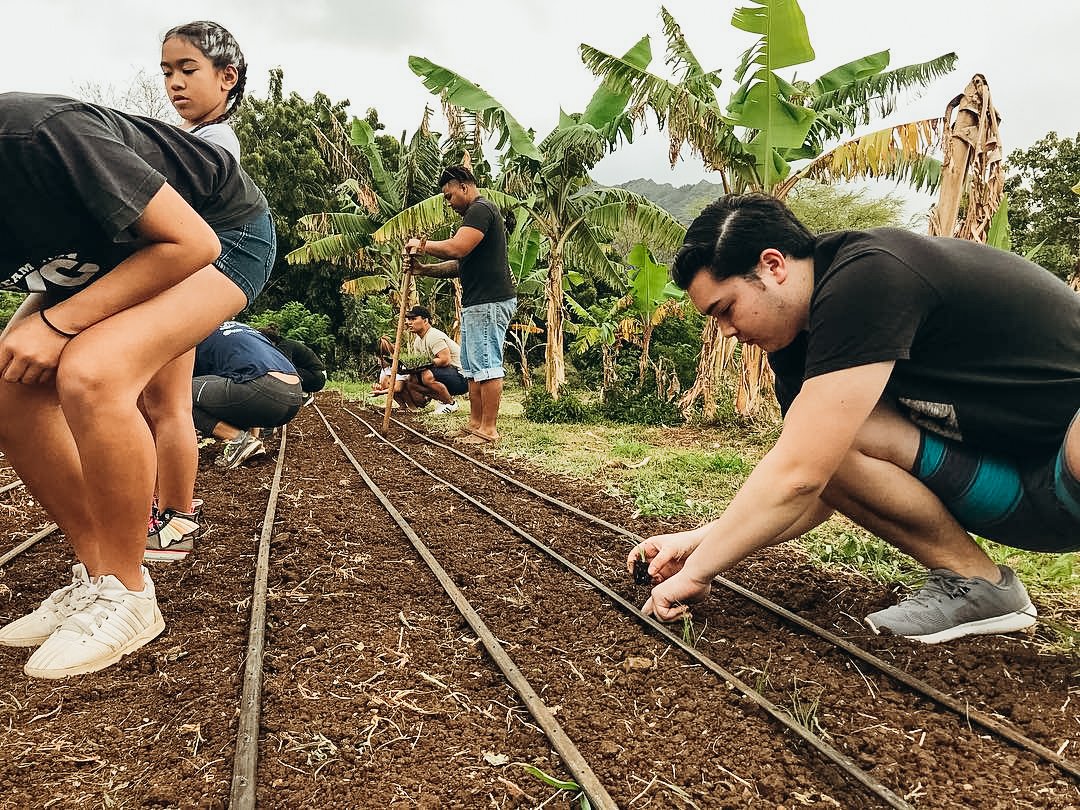



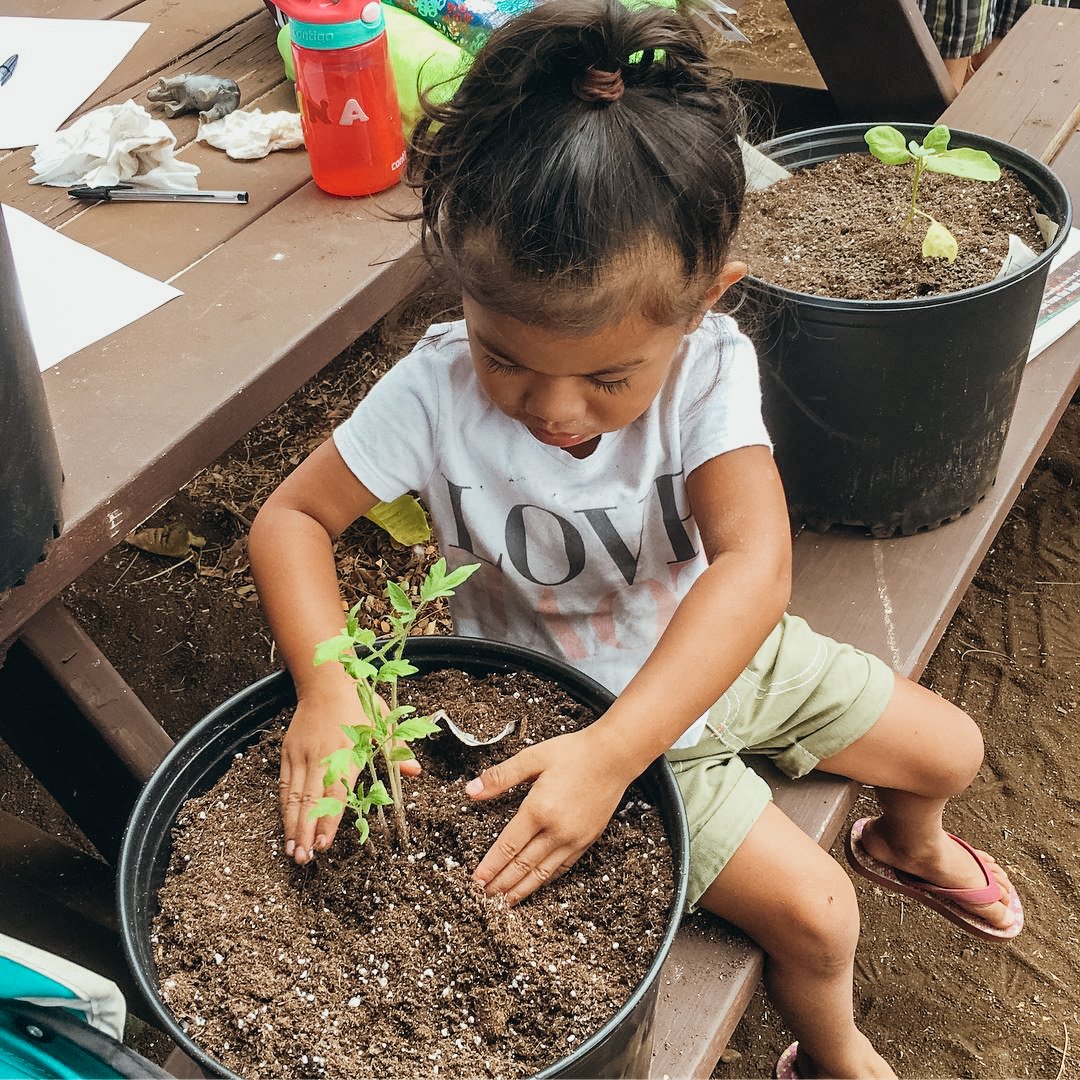







Our Founders
-

Luigi “Gigi” Cocquio
FOUNDER
-

Judy Seladis-Cocquio
FOUNDER
Our Team
-
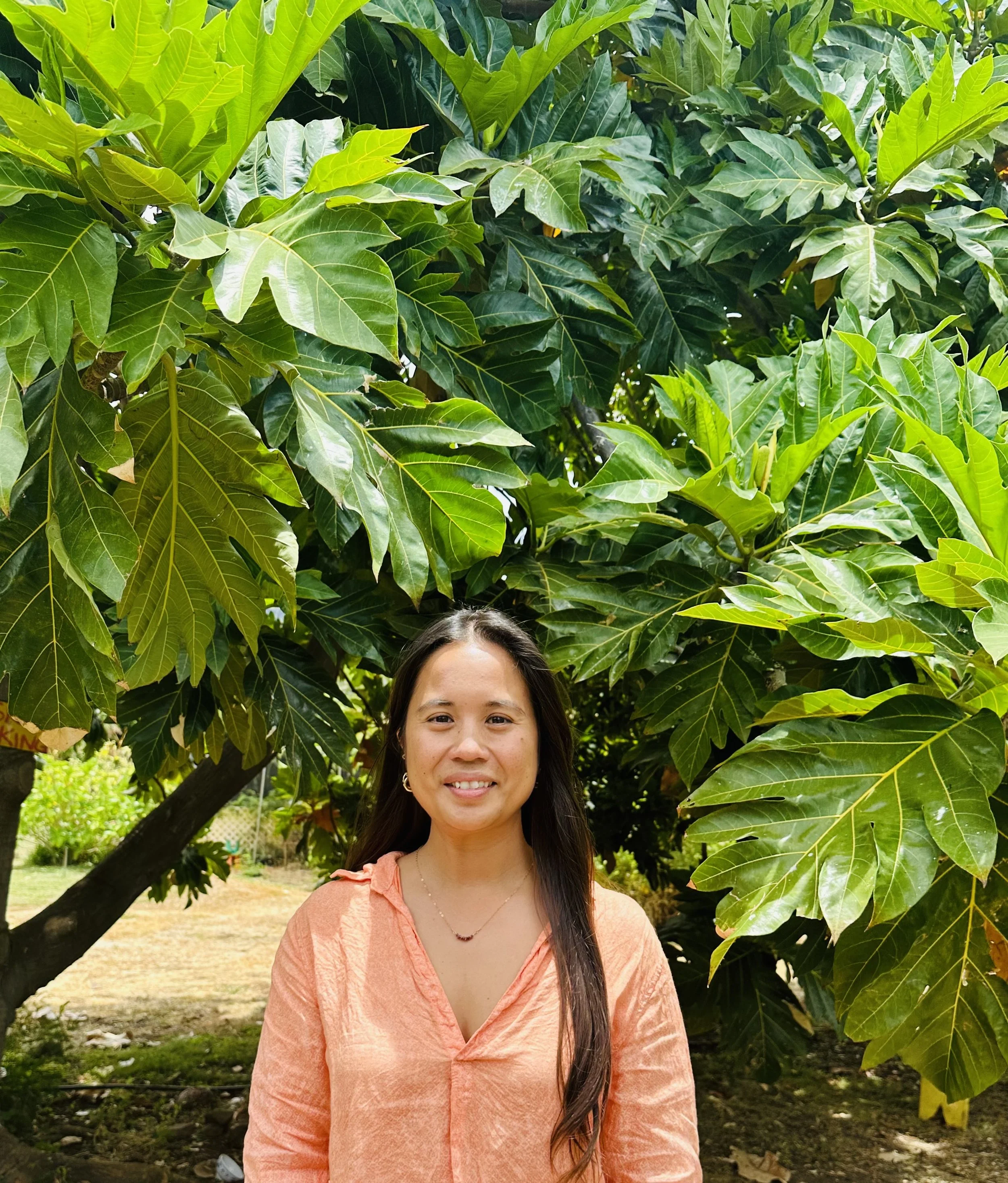
Chelsey Jay
EXECUTIVE DIRECTOR
Chelsey joined the Hoa ʻĀina O Mākaha (HAOM) ‘ohana in July of 2023. Chelsey grew up in Wai‘anae where she attended Nānāikapono Elementary and is a 2007 graduate of Kamehameha Schools. She received a BS degree in Environmental Science and Resource Management from the University of Washington and a Master's degree in Educational Foundations from the University of Hawaiʻi at Mānoa. For 10 years, Chelsey served the West O‘ahu community at Mālama Learning Center working to organize environmental stewardship programs, creating opportunities for the community to access ‘āina in meaningful ways, and building the capacity of the next generation. She is excited to help continue the important work of HAOM to build deep pilina with this ‘āina and each other as we grow and strengthen our beloved community. “With lots of gratitude and humility, I will try my best to 'auamo kuleana and honor all of the people who love HAOM.”
-
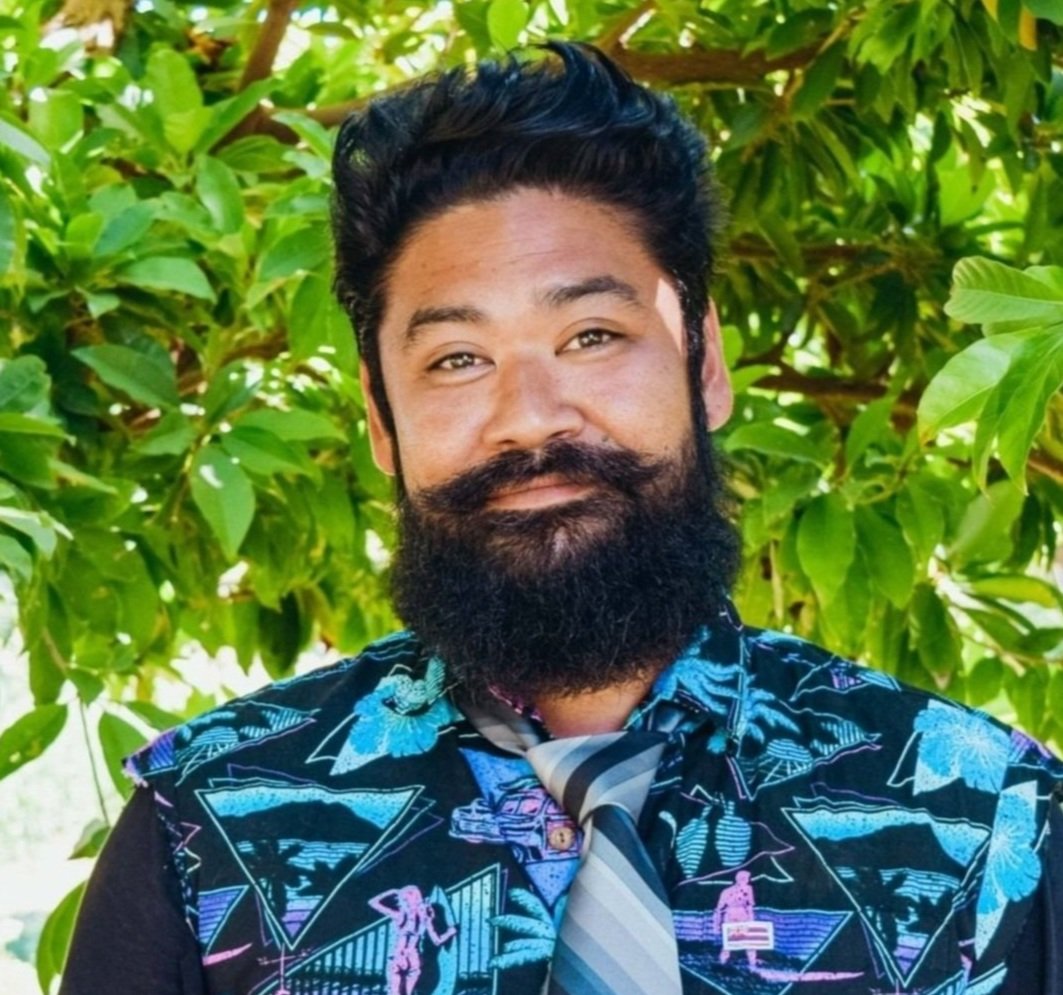
Shannon Shima
PROGRAM MANAGER
Shannon has been at Hoa ʻĀina O Mākaha for nearly 20 years contributing to the growth of the programs and operations in numerous ways. Before Hoa ʻĀina, Shannon was a journeyman carpenter and would volunteer to help with building projects on the farm. His creative spirit and handy building skills greatly benefits our educational programs revolved around the farm and we’re grateful for his dedication to our mission and community for so long.
-

Jonathan Abell
PRODUCTION MANAGER & CARETAKER
Jonathan is a proud resident and graduate of Wai‘anae High School class of 2008. He’s been working as a mahi‘ai for over a decade and is a lover of farming, ‘ohana, and community. Jon reminds us that, “There is one culture that connects us all, agriCULTURE!”
-

Ikaika Landford
PROGRAM ASSISTANT
Aloha! My name is Ikaika, but you can call me uncle Ikaika. Ikaika was born and raised in Wai‘anae and enjoys cooking, running, and working out. He attended Mākaha Elementary School and graduated from Wai‘anae High School class of 2002. “I like working at Hoa ʻĀina O Mākaha because it reminds me of my childhood and was my favorite IRA class. It’s important for the keiki to learn about the ‘āina, planting, health, and food because it will benefit their future for sure.”
-

Enimicio Sipe Jr (Lonny)
GROUNDSKEEPER
Lonny started working at Hoa ʻĀina O Mākaha in 2014 and considers this place to be very special in his heart. With great affection, Lonny loves Mr. Gigi and the team!
-
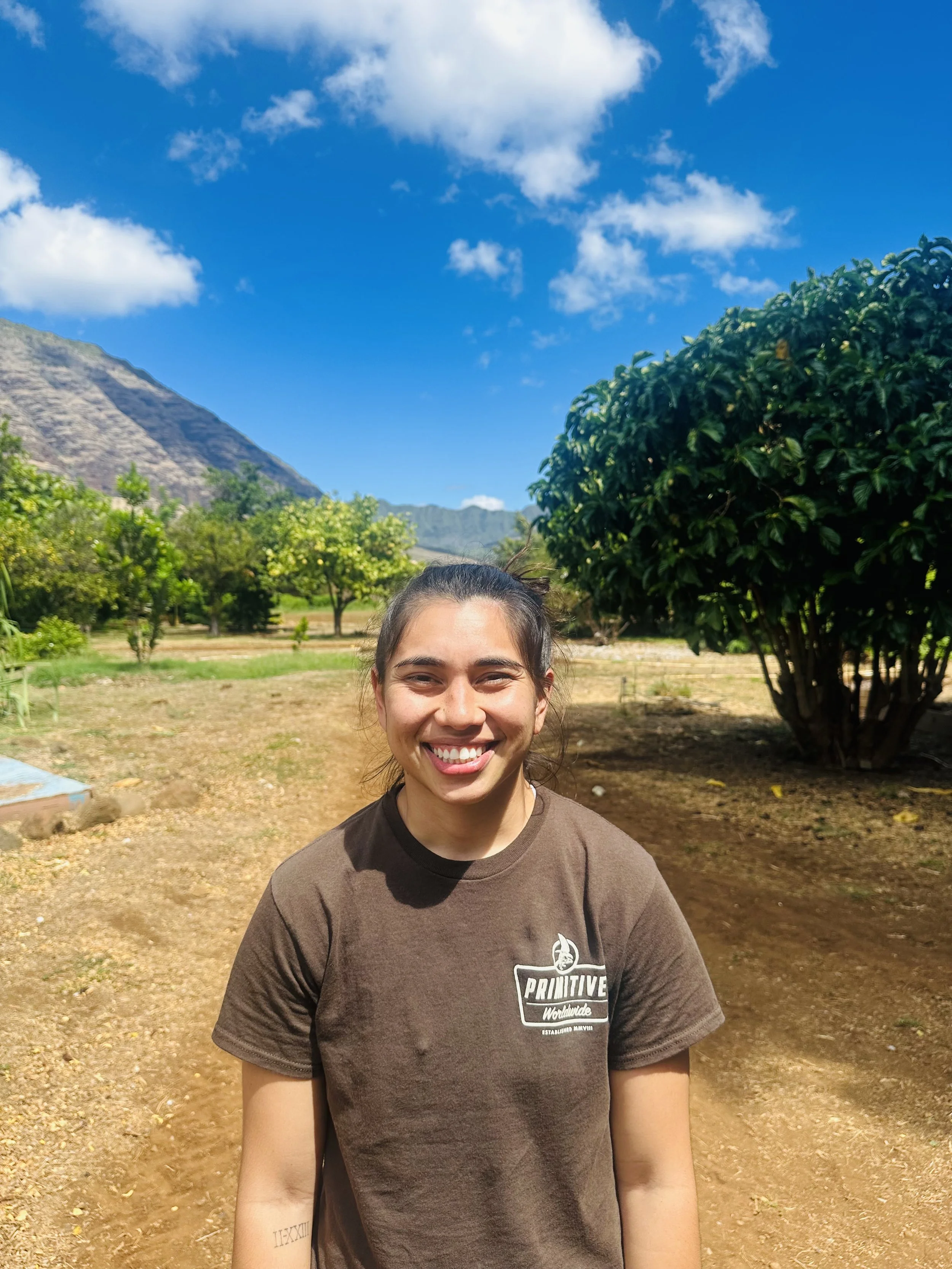
Yasmine Gamurot Ching-Lareau
MAHI'AI EDUCATOR
Yasmine is a proud Mākaha resident and strives to give back to her roots. As a former student at Mākaha Elementary, she enjoyed visiting Hoa 'Āina O Mākaha to see the animals, learn to grow produce, and cook with your own harvest - all with the company of Mr. Gigi! Yasmine loves her community greatly and aspires to share the same skills she gained over the years with the keiki to come.
-
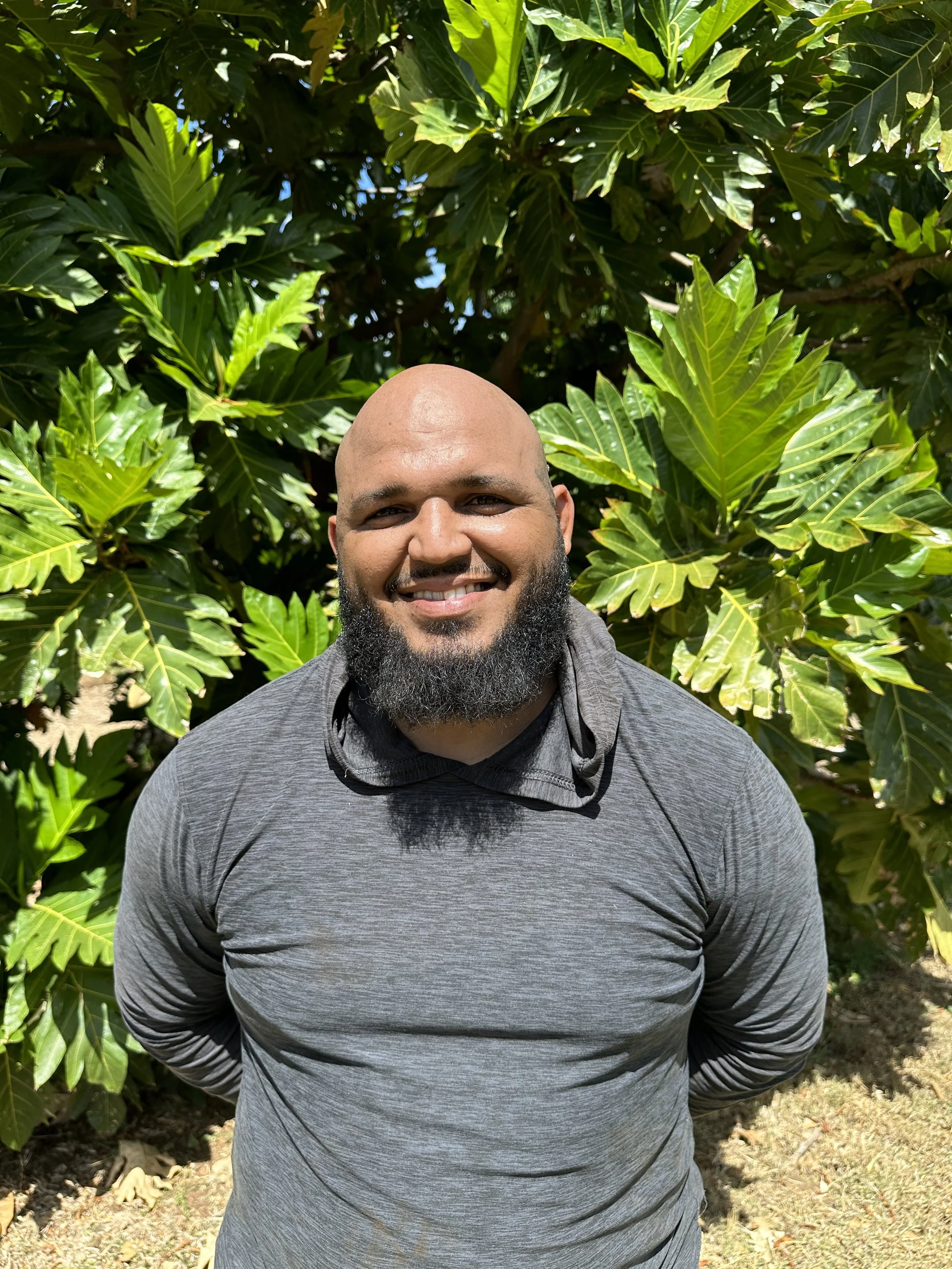
Joe Abell
FARM MAINTENANCE SPECIALIST
Joe Abell is a proud resident and graduate of Wai'anae High School class of 2007. Joe loves working at Hoa ʻĀina O Mākaha and being able to make a positive difference in his community using his gifts, talents, and abilities to impact the youth and the next generations of Hawai’i. Joe also enjoys teaching the youth the importance of land, community, and family.
Our Board of Directors
-

Kelsey Thornberry (Interim President)
Kay Fukuda (Treasurer)
Christopher Pokipala (Secretary)
-
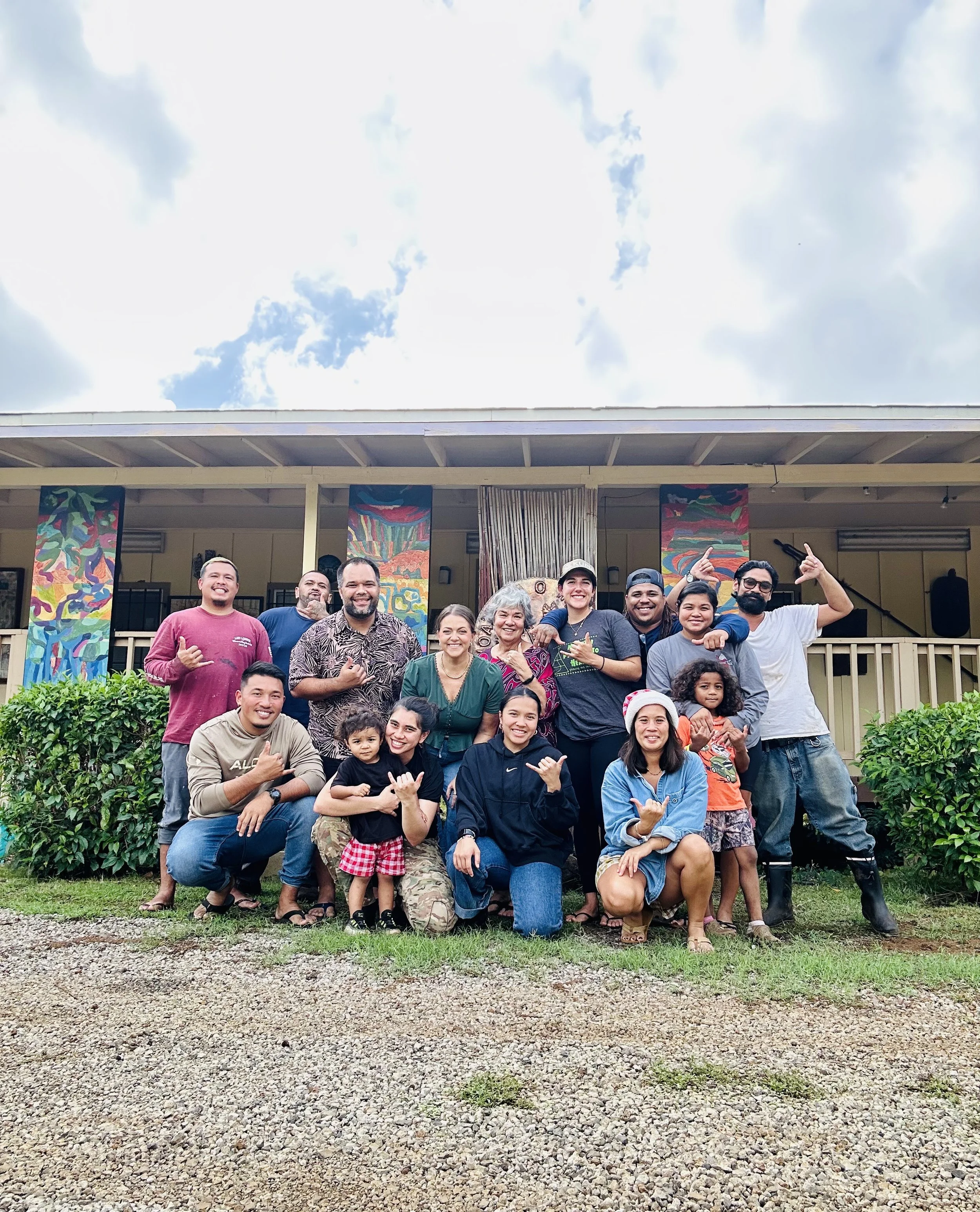
Alicia Higa (Director)
Jesse Mikasobe-Kealiinohomoku (Director)
Saleem Belbahri (Director)

Our History
On August 12th 1979, Father Luigi (Gigi) Cocquio moved from Sacred Hearts Parish into a quonset hut on five acres owned by the Catholic Diocese in Wai‘anae. A Maryknoll sister named, Anna McAnany, was the catalyst who introduced Gigi to the unused land to test his mettle. Soon after, his primary support came from Maryknoll priest, Ed Gerlock, and Eric Enos of Ka‘ala Farm. Enos brought a tractor, machetes, and some youth to help lay out a foundation. Gerlock assisted in organizing a group of men from the parish to operate a bulldozer and clear an area for irrigation pipes. This makeshift system was humbly built to nourish the seeds of the land like childhood dreams nurture imagination.
Puanani Burgess gave the place a name: Hoa ‘Āina O Mākaha = Land of Mākaha Shared in Friendship
Hoa ʻĀina O Mākaha’s (HAOM) earliest partnership, with Ka‘ala Farms, established a substance abuse rehabilitation program for the youth from Wai‘anae and Nānākuli High Schools called, The Wai‘anae Rap Center. For seven years, the two farms shared a tractor which was driven back and forth between both locations. The only structures on the land were former World War II barracks from Hickam Air Force Base. These three quonset huts were old and not in the best condition. The first one was used as a residential dwelling and the one situated in the back became the Rap Center’s Alternative School. The second quonset was used by the Wai‘anae Women’s Support Group.
Founded by Sr. Anna, Ho‘oipo DeCambra, Bobbie Spencer, Judy Seladis and Sandy Vierra, the Women’s Support Group did outreach to women and their families. They provided various types of assistance from financial and emotional support to counseling, emergency food baskets, literacy education, and an early soup kitchen for families. Aside from these accomplishments, they published a book on the oral history of women on the Wai‘anae Coast entitled, “A Time for Sharing”. This book has often been used as a resource in Women’s Studies courses at the University of Hawai‘i at Mānoa.
The Women’s Support Group was a safe place where women could share their life stories with other women and talk about the issues that affected their lives. It was a space of sisterhood where the support of other women meant new hope for themselves and their families; a haven where women were able to reinvigorate their souls. From this model, a new vision was born that would radiate out from the public schools on the Leeward Coast offering a global outlook for peace. With fights, riots, and other forms of violence happening on local high school campuses, a small group of residents expressed concern for the safety of their children. The Peace Education Program was first established at Wai‘anae High School because of Sr. Anna’s courageous leadership. From 1981-1999, the program reached thousands of students in schools, both on the Leeward Coast and throughout the State of Hawai‘i. Workshops for teachers were offered and a book called, “Teaching Peace”, was published as the program’s curriculum.
In the meantime, the farm was growing steadily; both the outreach programs and the crops to be harvested in the fields. By 1983, Gigi had a family to take care of. He married Judy Seladis and they lived in Nānākuli with her two sons, Buddy and Scott, and their son, Pomaika‘i. The farm didn’t have the financial resources to pay Gigi a salary. He started to raise corn and beans on the farm, and would sell them along the roadside. After several years, enough corn, beans, and basil were being sold to pay him a very small salary.
Sacred Heart Church formed a board to oversee the farm. Families from the community began showing interest in starting gardens on the farm. At one point, the farm was providing thirty families with small garden plots. Gradually, teachers from Mākaha Elementary School started maintaining small gardens on the farm with their students. Vegetables were grown and sold at a little stand at the front of the farm every Wednesday. Soon production shifted to growing and exporting basil with the help of community members who dedicated a lot of their time for a few extra dollars. Of course things weren’t all smooth sailing. Somehow Ed Gerlock and Gigi had acquired the reputation of trouble makers. When they first arrived to Hawai‘i, the Diocese didn’t want Gigi and Ed here at all. Maybe it was the fact that Mr. Marcos had escorted both of them out of the Philippines at gun point. Regardless, they worked very hard to shed their bad reputation. Members of the farm became very active with the struggles of the Hale Mōhalu leprosy patients and their campaign to prevent Gov. Ariyoshi from evicting them and demolishing their Pearl City residence. They were active in the Nuclear Free and Independent Pacific campaigns and groups supporting the movements for justice in the Philippines and Central America.
In 1986, Gigi and his family moved back to the farm. At this time, Ku‘umeaaloha Gomes, from the Wai‘anae Mental Health Care Center, had started a counseling and gardening program at the farm. Rather than talking to her clients in her small sterile office, she would bring them to the land. As they planted seeds or pulled weeds, she would talk-story with them. The conversations seemed more natural and productive for the children of the Wai‘anae Coast. She called the program Nā Keiki O Ka ‘Āina (Children of the Land).
In 1987, the principal of Mākaha Elementary, Mrs. Hazel Sumile, asked if Gigi could work with all her students. At first, he worked with some of the more difficult students and continued the gardening started by Ku‘umeaaloha. They also esatablished a “Kids in Business” store. Things were challenging yet productive. Nā Keiki O Ka ‘Āina became a program where everyone took care of the land and each other.
With the guidance of Bishop Joseph Ferrario and the Hoa ‘Āina Board of Directors, Hoa ‘Āina O Mākaha became a 501(c)3 nonprofit organization in August of 1992. A 25-year lease at the rate of one dollar a year, between the Diocese and HAOM, was formalized in a ceremony and celebration. The amount was paid in full at the signing to alleviate any unforeseen problems that might occur later. Over the years, the farm began hosting groups of people from around the world who were interested in Hawai‘i and the work with the Wai‘anae community. Visitors came from England, Italy, Japan, Philippines, and the United States. The strongest connections were with the Akaikutsu (Red Shoes) in Yokohama and My Ticket cultural tourism agency in Osaka. More often than not, these visitors would forego a stay in Waikīkī to sleep on the floor of Gigi’s quonset. The farm board began to dream of a place where people could come retreat to, cultural exchanges, work and eat together, and cultivate a peaceful world with the people of Wai‘anae.
In 1994, after years of fundraising in the United States and the generous support of friends in Japan and Italy; the decision was made to renovate the second quonset which was home to the Peace Education Program. The plan was to make the hut water tight, add new windows, and remodel the inside.
In 1995, Hale Ho‘omaluhia (House That Brings About Peace) was dedicated to Sr. Anna McAnany on August 7th, the 50th anniversary of the bombings of Hiroshima and Nagasaki. Before returning to Maryknoll, New York, the structure was completed in honor of her visionary work and dedication of almost 60 years serving the people of Hawai‘i. In her spirit of sharing life stories and experiences, Hale Ho‘omaluhia has hosted people from all over the world in the hopes that through our connection — a common thread might be laid around the world braiding peace and unity.
As part of this vision of finding peace through understanding our differences, Me Ke Aloha Pumehana Mai Hawai‘i (With Deepest Love from Hawai’i) was born with the intention of sharing the reality of Hawai‘i with the people of Italy. In 1997, this dream came true when 17 young people and adults traveled to Uggiate, Gigi’s home village in Italy. The trip was an incredible experience, not only for the group but also for the people of Uggiate and the surrounding villages. The beauty of baroque churches and the graceful gestures of the hula merged amid the overwhelming hospitality and love felt by all involved.
HAOM noticed more inquiries from schools were coming in about farm visits for educational purposes. As a result, the Learning Center at HAOM was established in 1996. During the 1998-1999 school year, 4000 students came to the farm to learn about gardening, Hawaiian plants, animal care, and alternative energy. The Ke Ala program was born.
Although it has always been part of the farm’s curriculum, the School to Work program began in a more organized manner in 1997 with the help of the Department of Education. The goal of the program was to give interested students from Mākaha Elementary an actual work experience. Students from third through sixth grade applied for different job positions: organic gardeners, Hawaiian plants specialists, carpenters, farm guides for visiting schools, and store clerks. After they filled out the job application, they would go through interviews and training to learn about the responsibilities and duties of their position. When asked during their interviews why they want to participate in the program, the students often responded, “because soon I will have to get a job to help support my family, and I want to be ready”.
In 1998, Bill Sutkus, a community worker at Queen Lili‘uokalani Children’s Center, envisioned the idea of starting a new program called, The Mālama Mākaha Credit Work. His direction helped the children of Mākaha Elementary participate in educational excursions. Workdays at the farm were designed to encourage parents to engage in activities that support their children and to take initiative with farm responsibilities.
1n 1999, HAOM published its first book, “The Love Was Already There”, to celebrate 20 years of existence.
In 2000, Hale Haumāna was built with the help of many. A traditional Hawaiian hale provided a place to learn, to reflect, to celebrate and practice the culture. In the same year, Aloha Pumehana Mai Hawai‘i group was invited by the Mayor and the Parish of Uggiate to return to Italy and celebrate the Jubilee. In Rome, the hālau had the opportunity to dance and meet with Pope John Paul II. In Uggiate, they joined with people from Bangladesh, Togo, Croatia, India, and Germany for an international celebration of the Jubilee year.
In 2005, the Department of Education cut many positions of resource teachers. Ke Ala was awarded a teacher for three years and because of lack of funding, HAOM had decided to close the program. Kōkua Hawai‘i Foundation came to the rescue and Ke Ala continued to flourish.
In 2008, HAOM published its second book, titled Through The Eyes of The Children. It is a reflection of the experience with children and the lessons of life learned with and through them.
In 2017, a 25-year lease with the Catholic Diocese ended. The farm did their best fundraising to purchase the property but, it wasn’t enough to reach the asking price of $1.5M.
A year later on July 6, 2018, the Wai‘anae Coast Comprehensive Health Center signed a 15-year lease as the new landlord of HAOM. Moving forward, the Hospital Board vowed to let the farm function on its own as it has all this time.
In 2019, HAOM celebrated 40 years of being an educational community center and Gigi stepped down from his Executive Director role. As founders, Gigi and Judy were honored by their loved ones during an anniversary dinner under the stars in November.
The history of Hoa ‘Āina O Mākaha has taught us that nothing could have been done without the help of thousands of hands. Our philosophy would not be a reality if these individuals did not believe in the promise of this place and the possibilities for change. HAOM continues to be indebted to these special people that contribute their energy and spirit to perpetuate our vision. With everyone’s help, a peaceful oasis has been created in an otherwise chaotic world.
Our Partners
Wai‘anae Coast Comprehensive Health Center
‘Elepaio Social Services
Mākaha Elementary School
Place-Based Learning and Community Engagement in School (PLACES) & Place-Based Afterschool Literacy Support (PALS)
Beelieve Hawai‘i
Our Supporters
Aloha United Way
Atherton Family Foundation
Cooke Foundation
Consuelo Foundation
Dume Wolverine Foundation
First Hawaiian Bank
Friends of Hawai‘i Charities
GIFT Foundation of Hawai‘i
Goodfellow Bros.
Hauʻoli Mau Loa Foundation
Hawai‘i Community Foundation
Hawai‘i Medical Service Association (HMSA) Foundation
Hawaiian Electric
Honu‘apo
James & Abigail Campbell Family Foundation
Johnson ‘Ohana Charitable Foundation
Kamehameha Schools
Kōkua Hawai‘i Foundation
Kosasa Foundation
Kosasa Family Fund
Mr. Luigi Zecca
Mohala Farms
Monarch Impact Fund
Nadao and Mieko Yoshinaga Education Fund
Nā Lei Aloha Foundation
Nā ‘Ōiwi Kāne
NSF, ‘ĀINA-IS Project
Serendipity II Fund
Swayne Family Foundation
The Chad and Stephanie Buck Charitable Fund
The Clarence T.C. Ching Foundation
The Giving Circle Church
The Harry & Jeanette Weinberg Foundation
The Healy Foundation
The Maka‘āinana Foundation
The Makua Group
The Starbucks Foundation
